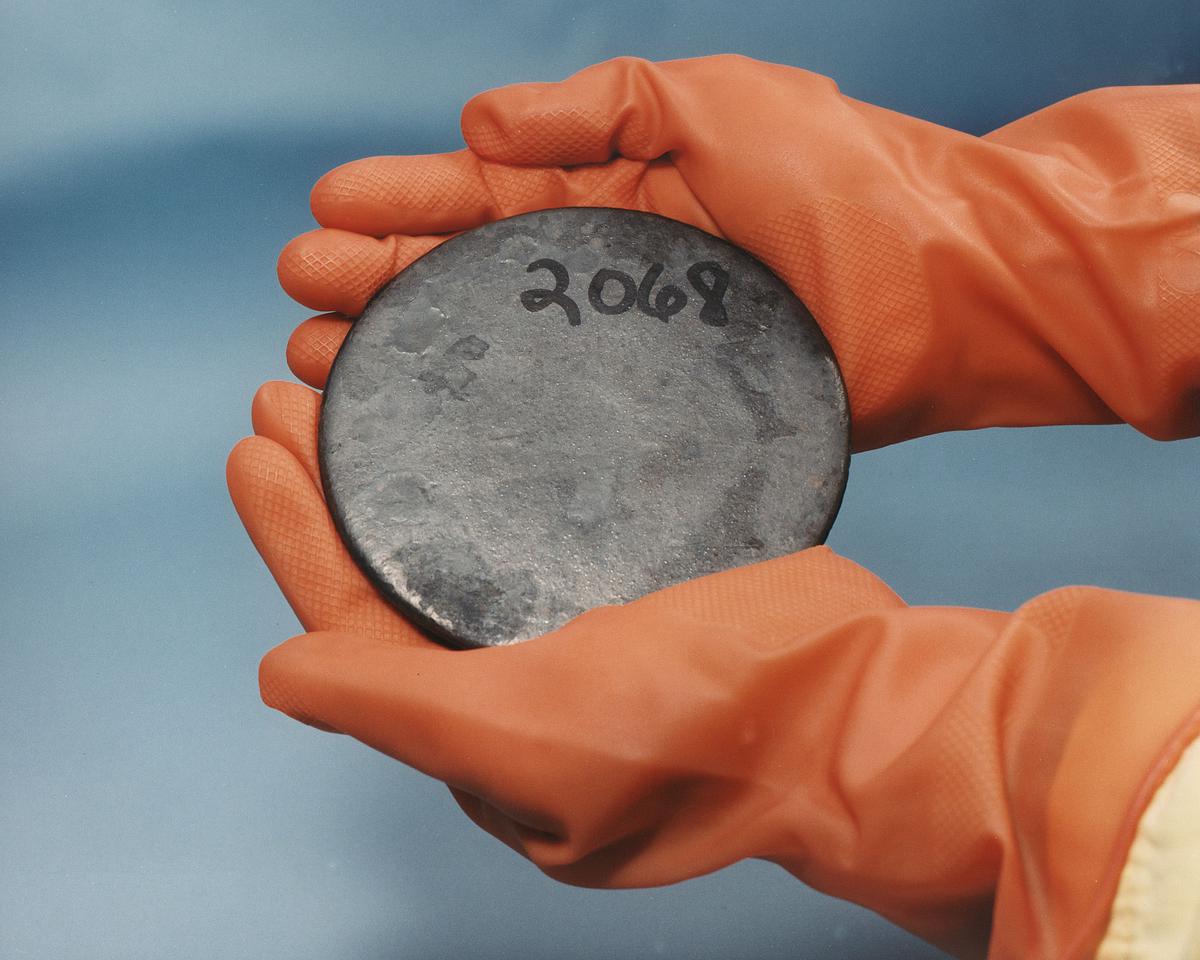Physicists in Japan have found a new uranium isotope with the atomic number 92 and mass number 241.

Uranium
- Uranium is a chemical element that occurs naturally and has the symbol U and the atomic number 92.
- It is a radioactive heavy metal found in minute amounts in rocks and soils all over the planet.
- There are numerous isotopes of uranium, which are atoms with the same number of protons but differing quantities of neutrons.
Isotopes of Uranium
- The most common isotopes of uranium are uranium-238 and uranium-235.
- Uranium-238 is the most abundant uranium isotope, accounting for more than 99% of natural uranium. Its nucleus contains 92 protons and 146 neutrons. Because it is not fissile, it cannot maintain a nuclear chain reaction. It is, however, fertile, which means it may absorb neutrons and undergo radioactive decay to make other isotopes such as fissile plutonium-239.
- Uranium-235 is the second most abundant uranium isotope, accounting for less than 1% of all natural uranium. Its nucleus contains 92 protons and 143 neutrons. It is fissile, as opposed to uranium-238, which implies it can sustain a nuclear chain reaction. It is utilised as nuclear reactor fuel as well as the primary material in nuclear weapons.
How do isotopes form?
- Isotopes can be formed either naturally or artificially in a laboratory.
- Natural processes such as radioactive decay, cosmic ray interactions, and nuclear fusion reactions in stars produce isotopes.
- Carbon-14, for example, is formed in the Earth’s upper atmosphere when cosmic rays mix with nitrogen atoms.
- Nuclear processes can also be used to generate isotopes artificially.
- This entails bombarding atoms with protons, neutrons, or alpha particles, which can alter the number of protons and/or neutrons in the nucleus.
How was uranium-241 discovered?
- To locate uranium-241, the researchers used the KEK Isotope Separation System to accelerate uranium-238 nuclei into plutonium-198 nuclei. (KISS).
- The two isotopes swapped protons and neutrons in a process known as multinucleon transfer, resulting in nuclear fragments with differing isotopes.
- Using time-of-flight mass spectrometry, the researchers discovered uranium-241 and determined the mass of its nucleus.
- According to theoretical calculations, uranium-241 has a half-life of 40 minutes.
The importance of the finding
- The discovery is noteworthy because it improves our understanding of nuclear physics, specifically the forms and frequency of big nuclei of heavy elements.
- This data assists scientists in developing models for nuclear power plants and exploding stars.
Also, what exactly are Magic numbers?
- There is a special interest in’magic number’ nuclei, which have a specific number of protons or neutrons and produce a highly stable nucleus.
- The heaviest known’magic’ nucleus is lead (82 protons), and physicists have been looking for the next element with magic numbers.
- The researchers intend to broaden their systematic mass measurements to numerous neutron-rich isotopes, at least to neutron number 152, when a new’magic number’ is predicted.
@the end
- The discovery of a new neutron-rich uranium isotope is a big milestone in nuclear physics since it gives critical information for understanding heavy element behaviour.
- The researchers’ desire to expand their measurements to other neutron-rich isotopes illustrates their dedication to pushing nuclear science forward and improving our understanding of the universe.
- The discovery of new magic number nuclei via these measurements could have practical uses in the design of safer and more efficient nuclear power plants, as well as understanding the physics of exploding stars.
Source: https://www.thehindu.com/sci-tech/science/in-pursuit-of-a-magic-number-physicists-discover-new-uranium-isotope/article66699249.ece#:~:text=Department%20of%20Energy-,Uranium%20isotope,our%20understanding%20of%20nuclear%20physics.
